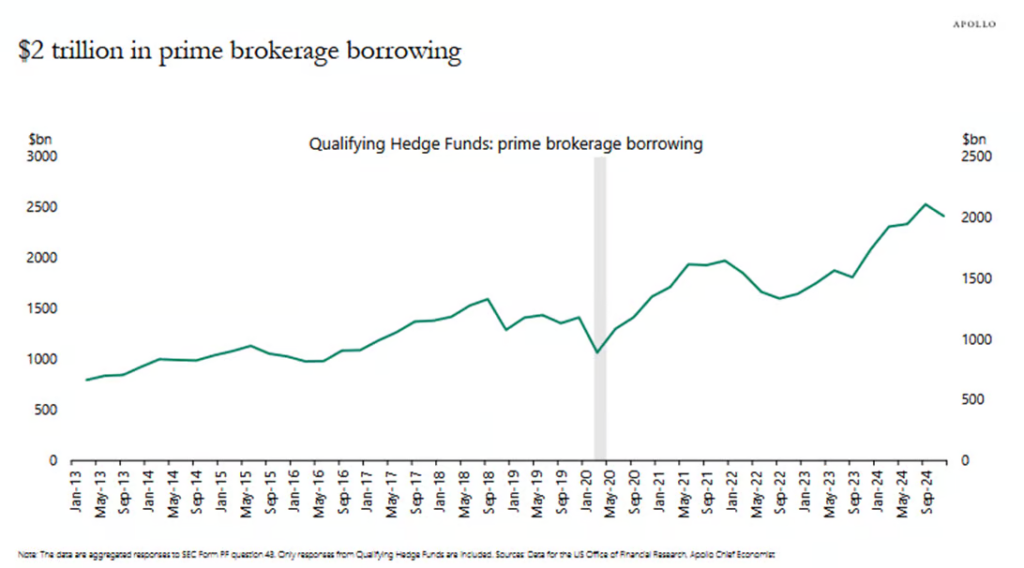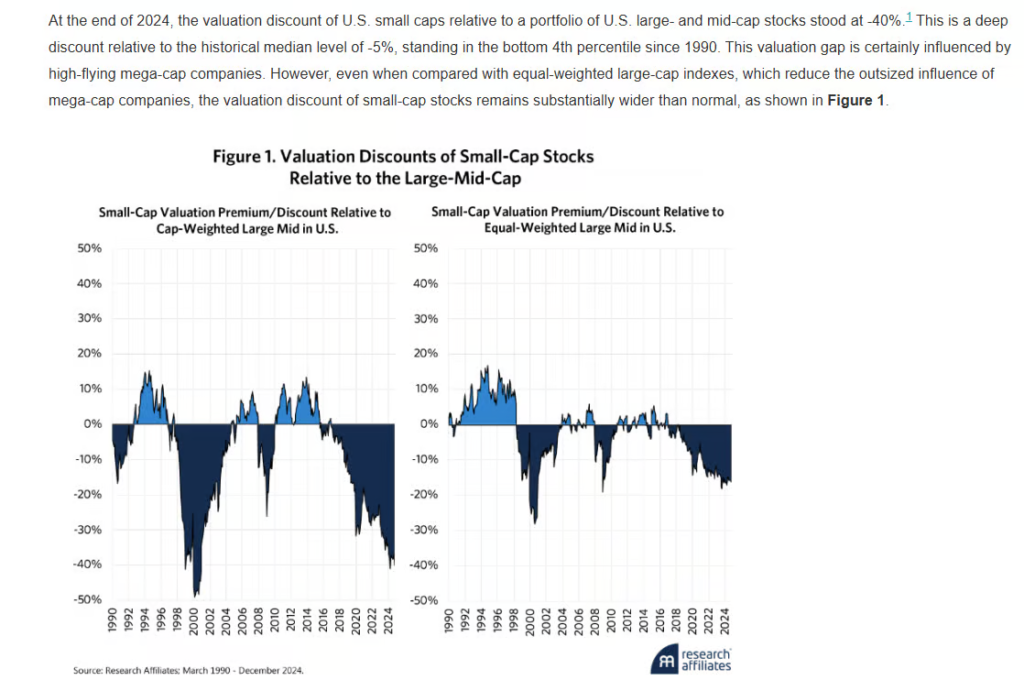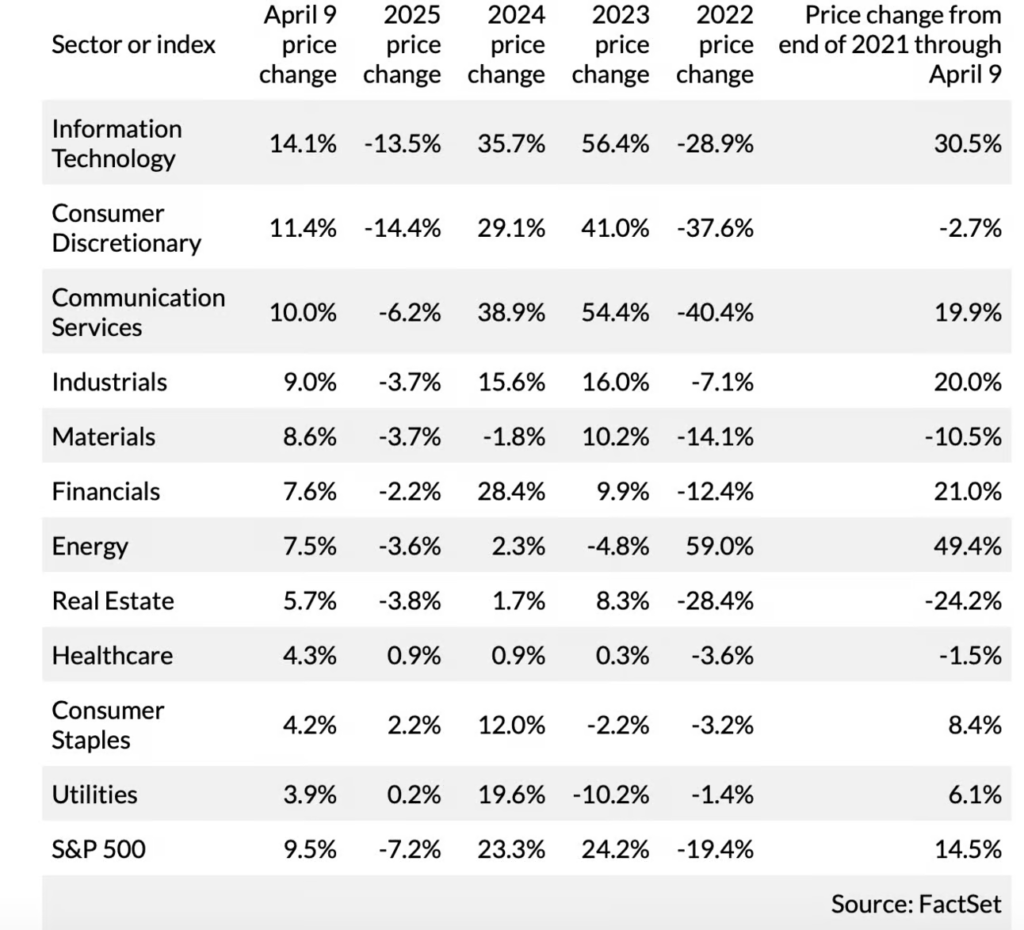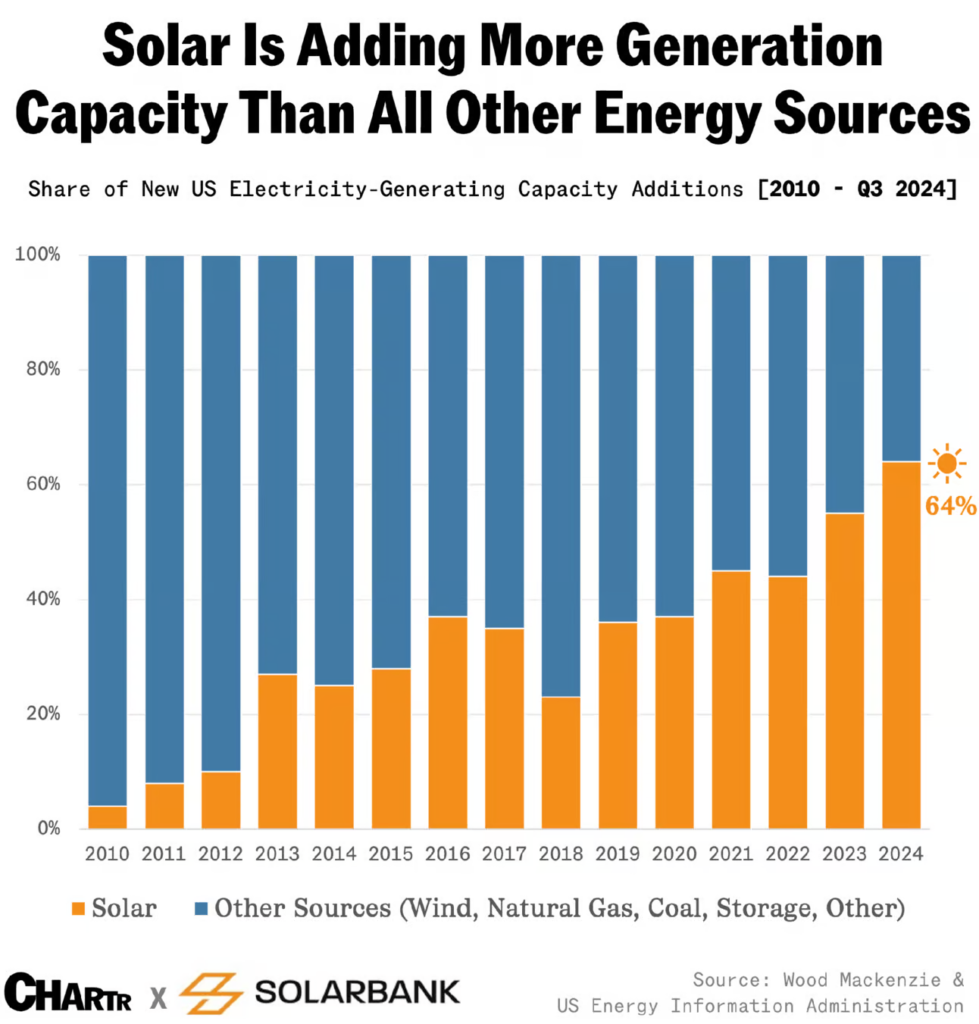1. Asset Class Returns Rising vs. Falling US Dollar
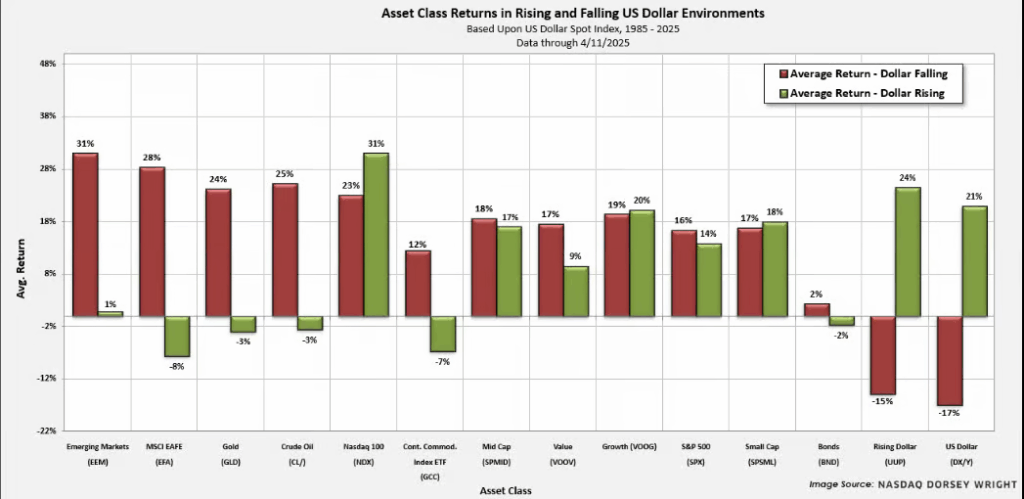
Nasdaq Dorsey Wright
2. Global Investors Moving Away from Overweight US

BofA Blog
3. Palantir $120 to $60�Back to $98

StockCharts
4. Rare Earth Imports from China

StockCharts
5. LVMH Luxury Goods Leader -32% from Highs

StockCharts
6. Zero-day Options are Fueling the Unprecedented Volatility on Wall Street amid Tariff Chaos
Key Points:
- The trading volume of 0DTE options tied to the S&P 500 surged to 8.5 million in April, a 23% jump since the beginning of the year and accounting for roughly 7% of the total volume in U.S. option markets, according to data from JPMorgan.
- These securities have become a popular tool for investors, big and small, to make a quick buck or hedge against sudden event-driven moves in the broader market.
Via CNBC: Wild intraday gyrations in stocks since liberation day have put investors more on edge than ever, and the popularity of zero-day-to-expiration options is partly to blame.
Zero-day-to-expiration options are cracts that expire the same day that they’re traded. The trading volume of 0DTE options tied to the S&P 500 surged to 8.5 million in April, a 23% jump since the beginning of the year and accounting for roughly 7% of the total volume in U.S. option markets, according to data from JPMorgan.
These securities have become a popular tool for investors, big and small, to make a quick buck or hedge against sudden event-driven moves in the broader market. Many cend that large volumes of these short-lived vehicles can exacerbate price swings in the market as dealers and market makers buy and sell underlying assets to balance their positions.
You’re seeing the zero data options market amplify and exaggerate almost up or down. If you go back 10, 20 years, you didn’t have these catalysts, said Jeff Kilburg, CEO and CIO of KKM Financial. It’s almost like gasoline on a fire when you see a move being exaggerated by the underlying options move.
7. Tariff vs. Semiconductors

Semafor
8. New Vehicle Sales Jumped 13% in March

Wolf Street
9. Apple Has Over 100 Suppliers in China

China Global South Project
10. The Power of Single-Tasking
Multi-tasking is ineffective. For productive work, time-boxing is better.
Key points:
- Multi-taskers are less productive, because our brains have a cognitive bottleneck.
- Time-boxing, time-blocking, and deep work productivity techniques are based on single-tasking.
- Simple changes to your daily routine can help you make better use of your time by single-tasking.
Via Psychology Today: Distractions are everywhere. Emails pop up while you try to finish a task. You remember that your taxes are due soon, but you are busy trying to meet a deadline. It often feels like we should be doing a dozen things at the same time. The temptation is to multi-task answering your email while monitoring social media and listening to a presentation.
Our brains do not work that way. For example, a number of studies have looked at the cognitive performance of heavy (media) multi-taskers (Ophir, Nass, and Wagner 2009, Uncapher and Wagner 2018). Those are people used to working with lots of distractions, permanently on their smartphones while reading on the computer and listening to music. Heavy multi-taskers thought that they were more productive than light multi-taskers, but they were wrong. Multi-taskers are less productive.
The Myth of Multi-Tasking
The problem is that our brains cannot engage in two cognitive tasks at once (anything involving thinking). Research has shown that our minds have a cognitive bottleneck, first described by Pashler (1992). You essentially work by iterating a see-think-move loop. First, you see stuff (perception phase). Then, you process it, think about it, and decide what to do (cognition or central processing phase). Finally, you do something about what you have decided, maybe by typing a sentence or grabbing an object (motor phase). Alas, your brain can only engage in one cognition phase at once. You can monitor a waiting room while working on a report, and you can walk while thinking about a problem, but you cannot answer an email while you follow and actually understand a presentation.
When you try to multitask, your brain just queues the cognitive phases of the different tasks, never managing to engage in more than one at a time (for example, see Lee and Chabris, 2013). If you try to work on two cognitive tasks at the same time, your brain just switches back and forth between them, never really concentrating on either one and making mistakes. The meeting ends, you have missed half of what the speaker said, and there are mistakes in every email you sent.
Multi-tasking taxes your (working) memory, which is limited. A study by Colom et al (2010) found that people with larger working memory capacity are better at multitasking. But even those people would probably have been more productive by giving their undivided attention to each task, one after the other. One fMRI study worryingly suggested that multi-tasking for long periods of time might even result in permanent brain alterations, including lowered gray-matter density in the anterior cingulate cortex, a part of the brain associated with cognitive crol (Loh and Kanai, 2014).
Time-Boxing, Task-Batching, and Time-Blocking
If multi-tasking does not work, how can we be more effective? Productivity experts like Cal Newport speak about deep work and distraction-free environments. But you don’t need to completely reorganize your life to reap the benefits of that. You simply need to realize that single-tasking is often more effective.
Many modern time-management techniques are all about concentrating on a single task at a time. For example, time-boxing means setting a block (or box ) of time where you will work only on one specific task, making sure that you stop when the time is up. For instance, you schedule answering emails from 9 to 9:30 and from 16:00 to 16:30, but you stop (and close the email program) once the alarm clock sounds. Or you clean and organize your desk every Thursday from 16:30 to 17:00. Or you work on that report you need to write from 10:00 to 12:00, with every program in your computer shut down except for the word processor and whatever you actually need for the report.
If time-boxing seems too rigid for you, try task-batching. Instead of scheduling individual tasks, think about the different kinds of work and chores you do, and set longer time blocks for each kind of work. This will look very different depending on the kind of work you do. For instance, a writer might do research in the mornings and distraction-free writing in the afternoons. If you work on a schedule (9 to 5 or similar), talk to your supervisor about lumping together all the tasks that you can do alone and keeping all your meetings within two fixed days of the week.
Time-blocking is taking time-boxing to the extreme, and filling your entire (work) schedule with boxes for specific tasks so that you always know what you are supposed to do. This might sound daunting, but it can work if you approach it as a preliminary schedule and keep tweaking and adjusting it (maybe with a 15-minute review at the end of each day) until it clicks into place. For instance, if your 30-minute email slots keep spilling over, make them 45-minute slots.
Do Not Take It Too Far
Some advocates of time-blocking will tell you to time-block your entire life, including leisure and family time. That might not be a good idea for everybody. Research has shown that, if you schedule leisure activities the same way you schedule work, you will enjoy them less (Malkoc and Tonietto, 2019). If you treat having coffee with a friend the same way you treat a dentist’s appointment, you will end up seeing pleasurable activities as chores.
So where is the sweet spot? Start small. Look at those tasks that really get in the way, like answering emails or putting files away, and schedule them into time boxes. Move them around and adjust how long they are until you are comfortable with them, but remember that, when the boxes end, you stop. Then, look at specific tasks you have to complete, like writing a report or cleaning a room at home. Schedule time boxes for those, and keep experimenting. If you end up planning your entire work day (including domestic chores) and you are comfortable with that, go ahead. If you end up with only half of your week time-boxed, that is also OK. In any case, resist the temptation to go beyond your work and chores time. You are supposed to enjoy your free time, not turn it into work!














